Water quality issues challenge what it means to 'leave no trace' in beloved Boundary Waters

BOUNDARY WATERS CANOE AREA WILDERNESS, Minn. – When Lawson Gerdes looks back at plant collections from her field surveys of the Boundary Waters Canoe Area Wilderness, she’s flooded with memories of what the forest looked like and felt like.
For 45 years, Gerdes, a retired field ecologist and natural resources program manager, has lived within the Superior National Forest in northeastern Minnesota, where she’s witnessed cumulative changes unfolding over time. There are obvious signs of change, like where the old growth forest ends and early successional trees, like aspen and birch, take root.
But the changes she’s focused on are more subtle.
The air is different. The sounds are different. The soil is different.
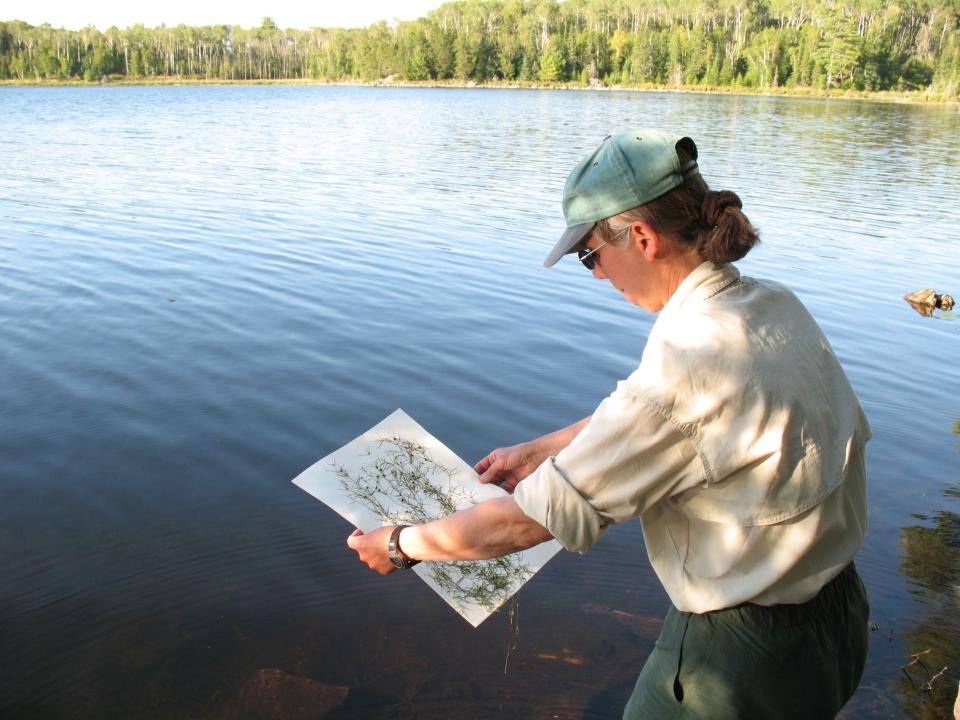
The Boundary Waters is the largest wilderness area east of the Rocky Mountains. It spans more than 1 million acres along the U.S.-Canada border and is filled with forests, glacial lakes and streams. The wilderness area is a popular spot for canoe trips as well as other forms of recreation that bring in more than 150,000 visitors each year.
Designated wilderness areas have the highest level of federal protections for public lands in the country. Visitors are told to follow the principle: Leave no trace. But climate change and environmental issues are making that increasingly unachievable.
People often say they don’t need to worry about the Boundary Waters because it’s protected, Gerdes said, “But it’s never fully protected.”
The ice season is shrinking, reports of blue-green algae blooms are on the rise, and microplastics have made their way into the water.
“When you start with a really pristine system, there's not many places you can go but worse,” said Chris Filstrup, a freshwater scientist at the University of Minnesota-Duluth.
How much these issues will change the beloved wilderness lakes is unclear.
Superior National Forest is one of the fastest warming forests
The U.S. federal government first set aside land that would become the Boundary Waters Canoe Area Wilderness in 1902. A series of actions by the federal government after that continued to set aside land and increase protections within the region.
In 1964, the U.S. Congress passed the Wilderness Act, which defined wilderness areas as wild, largely undeveloped areas that are federally protected from development and activities that would destroy the wilderness character. While the Boundary Waters automatically received wilderness status under the act, logging and motorboat use were still permitted.
In 1978, then-president Jimmy Carter signed the Boundary Waters Canoe Area Wilderness Act, solidifying protections and preventing activities such as logging, mining and motorboats.
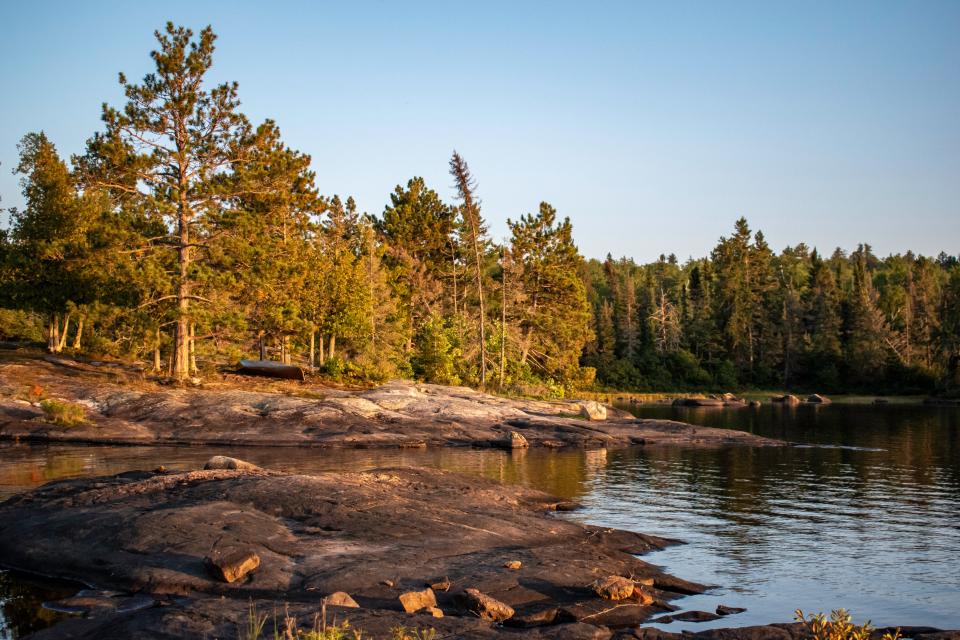
The wilderness area sits in two watersheds: the Great Lakes, which flows to the Atlantic Ocean via the St. Lawrence Seaway; and the Rainy River, which makes its way to the Atlantic Ocean via the Hudson Bay in Canada.
The Superior National Forest sits at the southern edge of the boreal forest biome, which stretches across northern North America from Alaska to Canada's Labrador province. The national forest is home to around 2,000 lakes and the Boundary Waters, all of which are starting to feel the effects of climate change amid pressures from humans and industry.
Minnesota is among the fastest warming states in the U.S., according to an analysis by the Washington Post. The North Star state has also lost two weeks of ice cover in the last half century.
Amy Freeman, an explorer and wilderness guide based in Ely, lived in the Boundary Waters for a year with her husband to raise awareness against proposals for nearby sulfide-ore mining, which extracts precious metals like copper and nickel.
The Freemans began their expedition in late September 2015, and she said being out in the wilderness during spring and fall allowed her to witness some of these change. It took a while for ice to form that winter, delaying plans to switch from paddling to dogsledding. They relied on friends and family to help resupply their food, but because of the delay, they had to wait 19 extra days.
The area will always be wild, she said, but her year-long journey made her much more aware that the character of the wilderness was undergoing change.
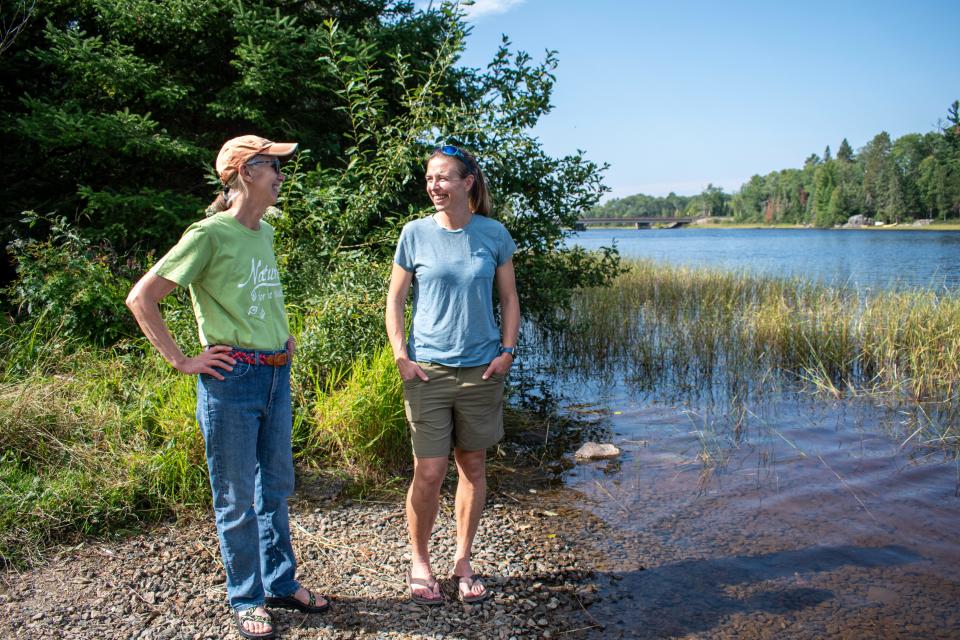
Blue-green algae blooms in wilderness area surprise, challenge scientists
As these northern lakes continue to warm, blue-green algae blooms are starting to show up in the least expected places.
Algae has long been known to bloom in warm water in disturbed, developed areas where there is nutrient run-off. Harmful algae blooms, where toxins are released, are a public health threat and severely damage water quality in parts of the Great Lakes, like Lake Erie and the lower bay of Green Bay.
But with the onset of climate change, scientists now see algae blooms cropping up in Lake Superior, a lake that is cold, nutrient-poor and largely undeveloped.
And in 2015, Adam Heathcote and his team were doing research — unrelated to blue-green algae — on Isle Royale in Lake Superior when blooms cropped up on remote lakes on the island. The team collected water samples and determined the blooms were toxic and exceeded drinking level standards.
After the unusual bloom event, Heathcote, the director of the Department of Water and Climate Change at the St. Croix Watershed Research Station, turned his attention to the Boundary Waters wilderness.
He talked to locals and found that reports of blue-green algae blooms in the Boundary Waters date back to the early 1900s. Satellite images and increased reports over the last decade suggest they are getting worse. The team is trying to figure out why.
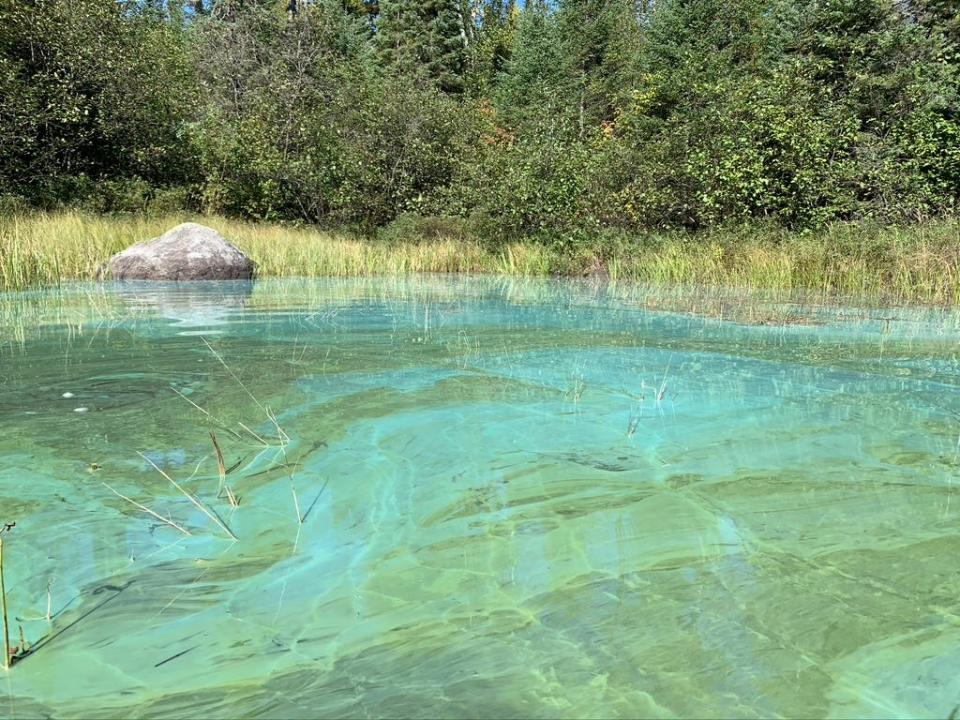
One possible cause is that warming is changing the physical structure of the lakes, he said, causing lakes that used to stratify ? or separate based on temperature ? to now mix and bring up more nutrients from the bottom. Shorter ice seasons also give more time for the cyanobacteria that cause the blooms to grow. Conditions may now be ripe for the bacteria to proliferate. Another possibility is that nutrients are carried into the region through the atmosphere on snow, wildfire smoke or dust, he said.
In pristine areas, very small amounts of nutrients can shock the ecosystem and cause major changes, Heathcote said.
And while they don’t know the answer just yet to why blooms are happening in the Boundary Waters, Heathcote said, it’s likely a mixture of climate change and nutrients coming in from afar.
Wildfires can make lakes murkier and nutrient-rich
Shorter winters and less ice cover often get the most attention when it comes to climate change around Lake Superior. But the wildfire season is expanding in the Northwoods, too.
Wildfires also may be affecting water quality in some of the region’s most pristine lakes, according to a study published in August by researchers at the University of Minnesota-Duluth.
The scientists sampled lakes shortly after the Greenwood Fire, which burned more than 41 square miles of the Superior National Forest in late summer 2021 after lightning struck near Isabella, Minn., just south of the wilderness area. The wildfire caused nearby lakes to become murkier, and they also had higher nutrient loads, like nitrogen and phosphorus, said Filstrup, author of the study.
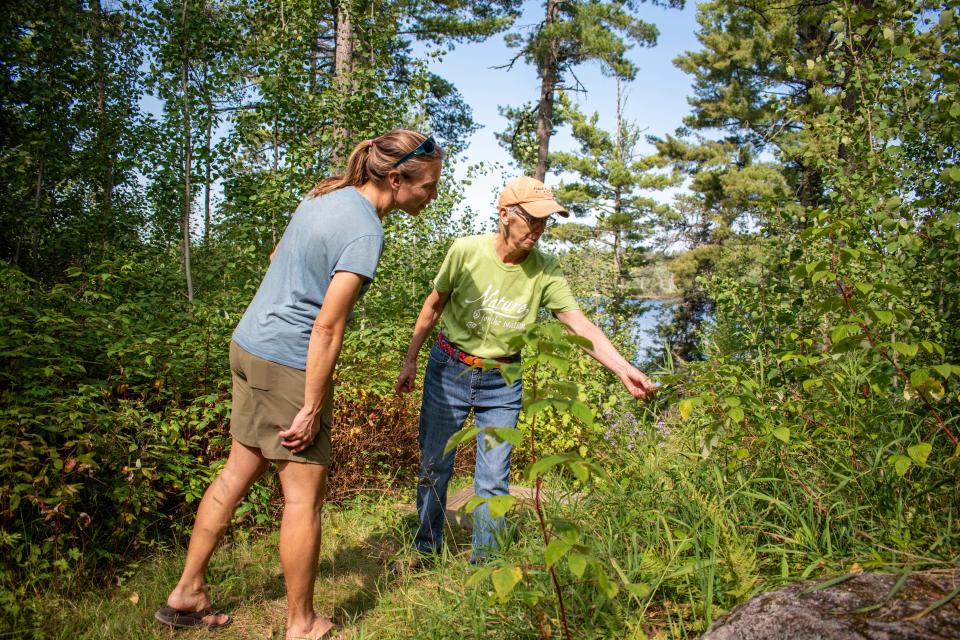
The added nutrients haven’t led to more algae blooms — at least not yet.
Because the lakes in intensely burned areas were a lot murkier, it’s possible there isn’t enough light for algae to bloom. Or the response may be delayed, Filstrup said.
But one thing is clear: These pristine lakes are sentinels of climate change, he said.
“As we continue to see these wildfires become more frequent, more severe under climate change, (wildfires) may be the primary stressor of these lakes going forward,” Filstrup said.
Microplastics in the water ‘should serve as a wake-up call’
Microplastics — small plastic particles about the size of a sesame seed that pose a health risk to humans, fish and wildlife — have made their way into the Boundary Waters, too.
As a part of an undergraduate research project at the University of Minnesota, Ethan Cypull collected water samples from six lakes in the Boundary Waters, starting at Mudro Lake — a common entry point into the wilderness near Ely. He discovered microplastics in more than 65% of the samples.
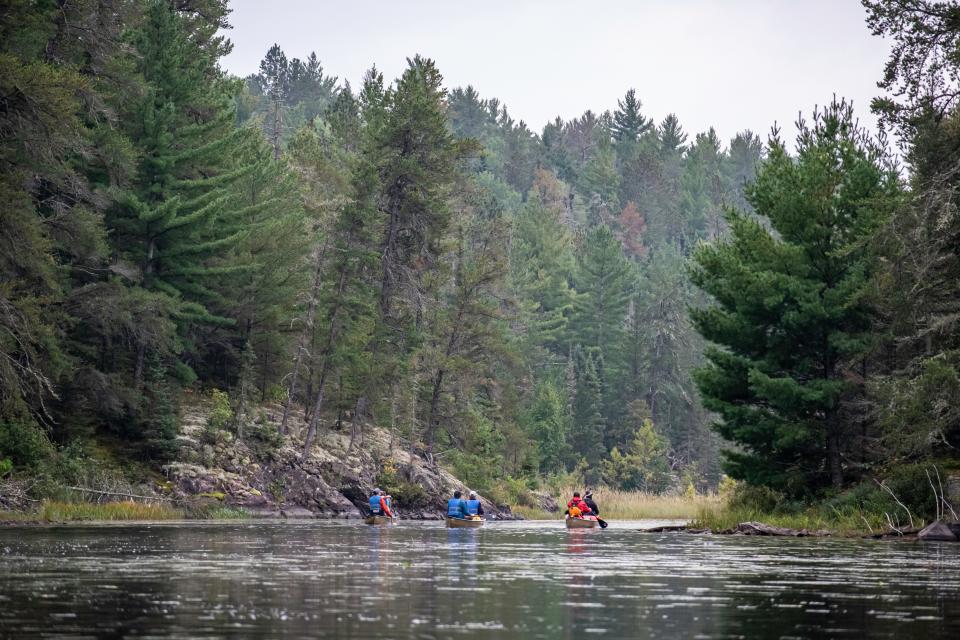
Cypull, who is now a graduate student at Yale University, isn’t the only one to find microplastics in the waters in the Boundary Waters.
Researchers at the University of Wisconsin-Eau Claire found microplastics in earthworms, soil and water in 2019. One single earthworm contained 80 pieces of microplastic.
And since birds, fish and wildlife eat earthworms, it’s likely they’ve made their way up the food chain, the researchers said.
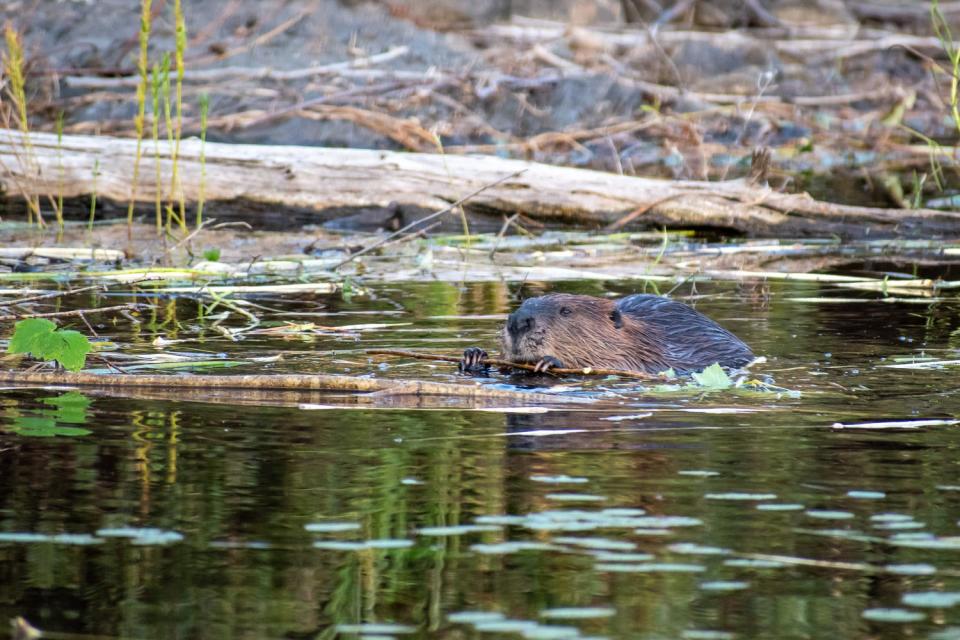
Microplastics can easily shed from items typically brought in by visitors, like synthetic clothing, blankets, tarps and toothpaste. They can also be brought in through rain or wind.
“Finding (microplastics) in a place as pristine as the Boundary Waters should serve as a wake-up call to everyone that cares about recreating outdoors,” Cypull said.
‘Forever chemicals,’ toxic mercury pollute waters nearby
PFAS, or "forever chemicals," are another threat to water quality in the Boundary Waters. These contaminants haven’t been found yet, but largely because the waters haven’t been tested, said Summer Streets, a scientist with the Minnesota Pollution Control Agency. Streets said PFAS are likely present.

The state agency has found forever chemicals in fish in undeveloped areas along Lake Superior, like near Grand Portage close to the Canadian border.
Many waterways in Minnesota, including some in the Boundary Waters, exceed state standards for mercury, for example. Mercury is released into the air from taconite mining and other industries, and exists in multiple forms. Its most toxic form, methylmercury, accumulates in fish, causing serious health issues if too much is consumed. It’s also a neurotoxin that causes brain damage in babies. The toxic metal is also stored in forests and peatlands, and released long after mines are abandoned.
The U.S. Environmental Protection Agency recently took steps to limit emissions from taconite mines. But proposals to build Minnesota's first sulfide-ore mine to extract copper and nickel near the Boundary Waters loom on the horizon, which opponents worry will cause even more pollution and environmental degradation.
More: Progress seen at Great Lakes' second-largest area of concern, on Minnesota-Wisconsin border
A different Boundary Waters for the next generation
The environmental issues creeping into the Boundary Waters are all the more reason to think and act on environmental challenges, Gerdes said. People need to pay attention and weigh in on legislation because what is happening elsewhere is also happening in the wilderness, she said.
Freeman and her husband have been calling attention to copper-nickel mining in unique and adventurous ways. For instance, in 2014 Freeman paddled and sailed on a 101-day, 2,000-mile journey from Ely To Washington D.C. Four years later, they biked to D.C. towing a canoe behind them to collect signatures and give presentations about the environmental threats of mining.
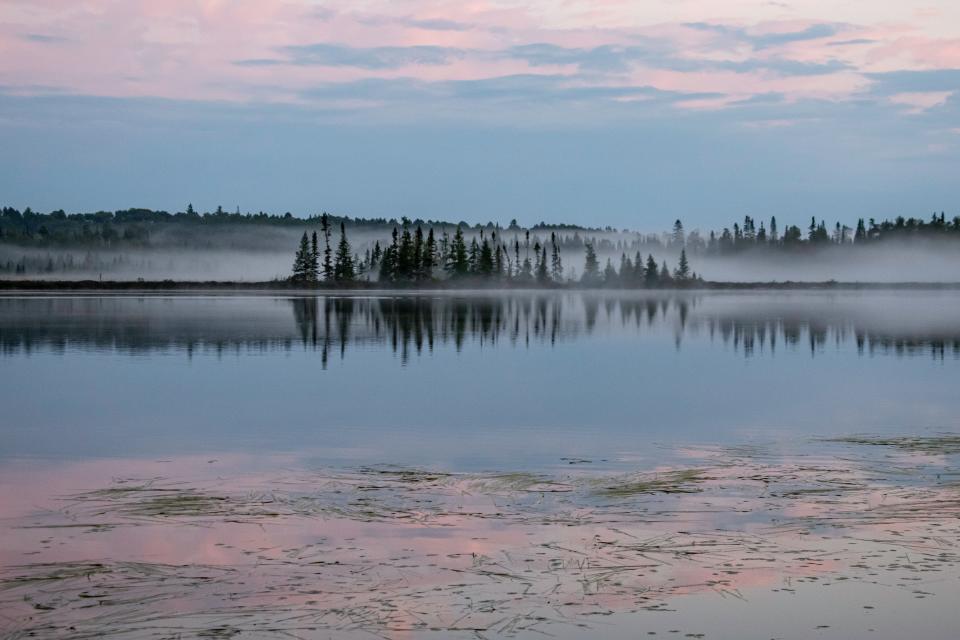
"We need to speak loudly for this quiet place," Freeman said.
Gerdes is encouraged by the fact that an increasing number of young people are moving to northern Minnesota. Another thing that will help: providing more opportunities for people to experience the wilderness.
And while the Boundary Waters may not be the same as she first saw it decades ago, Gerdes said that she remains an eternal optimist.
“These challenges are opportunities,” she said.
Caitlin Looby is a Report for America corps member who writes about the environment and the Great Lakes. Reach her at [email protected] or follow her on X @caitlooby.
This article originally appeared on Milwaukee Journal Sentinel: Climate change, algae blooms, pollution alter Boundary Waters
Solve the daily Crossword

